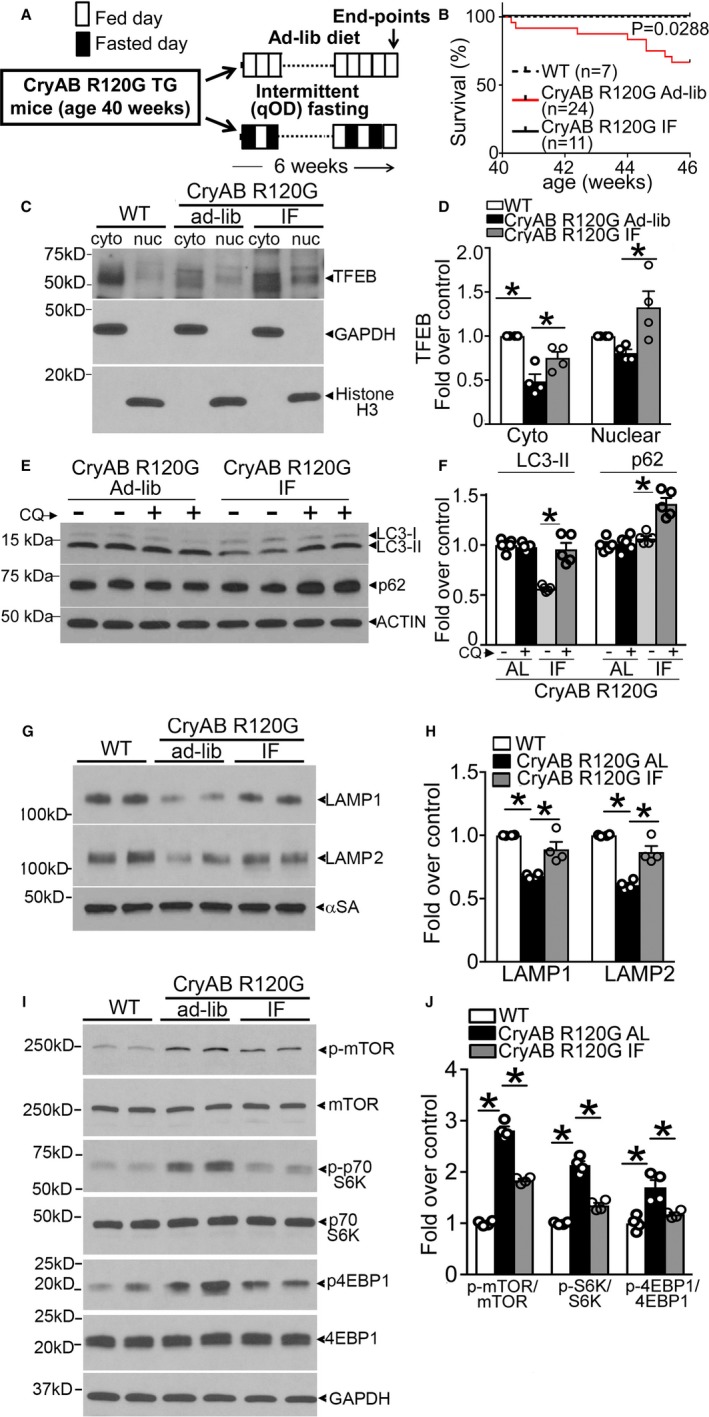Figure 2.

Intermittent fasting (IF) activates transcription factor EB (TFEB) and restores autophagic flux in αB‐crystallin R120G mutant transgenic mice. A, Schematic depicting experimental intervention with IF in Myh6‐CryABR120G transgenic mice. B, Survival curves in IF and ad‐lib (AL) fed Myh6‐CryABR120G transgenic mice and AL fed controls over the 6‐week experimental duration. P value depicted is by log‐rank test. C and D, Representative immunoblots (C) demonstrating expression of TFEB with quantitation (D) in the cytosolic and nuclear fractions from hearts of mice treated as in A (at 46 weeks) and subjected to biochemical fractionation. Expression of GAPDH and histone H3 is used to detect enrichment of cytosolic and nuclear proteins, respectively. N=4/group. E, Assessment of autophagic flux in mice Myh6‐CryABR120G transgenic mice subjected to IF or provided access to food AL as in A, and injected with chloroquine (40 mg/kg for 4 hours) or diluent with immunoblotting for LC3 and p62. F, Quantitation of LC3‐II and p62 in cardiac tissue from mice treated as in E. N=4/group. G and H, Representative immunoblot (G) with quantitation (H) of lysosome proteins LAMP1 and LAMP2 in total cardiac protein extracts from Myh6‐CryABR120G transgenic mice subjected to IF or AL feeding, or littermate wild type (WT) as in A. N=4/group. I and J, Representative immunoblots (I) demonstrating expression of mammalian target of rapamycin (mTOR) pathway proteins with quantitation (J) of phosphorylated mTOR (p‐mTOR), phosphorylated 70S6K (p‐S6K), and phosphorylated 4EBP1 (p‐4EBP1) in Myh6–αB‐crystallin R120G transgenic mice subjected to IF or AL feeding, and WT controls as in A. N=4/group. qOD (every other day). *P value by post hoc test after 1‐way ANOVA.
